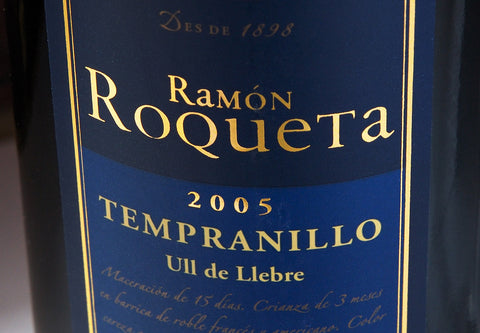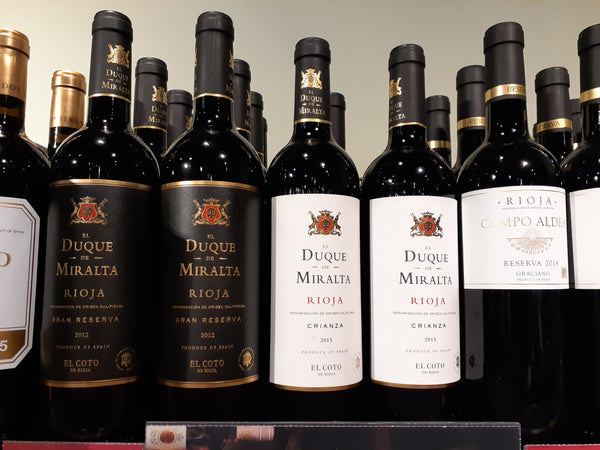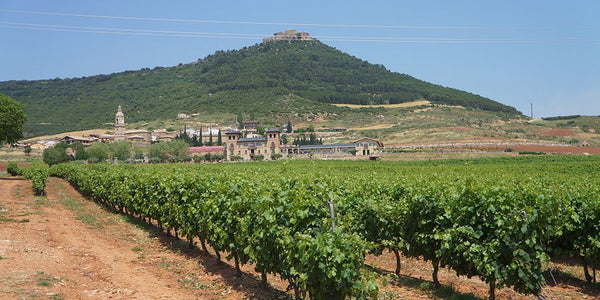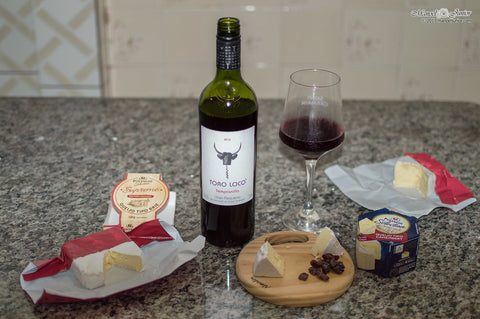What is Tempranillo Wine?
Tempranillo (tem-prah-NEE-yoh) is a red wine grape of Spanish origins. It is the 4th most planted grape around the world and has been gaining in popularity among winemakers in the last few decades. Between 2000 and 2010, Tempranillo was the most planted grape across the globe, nearly twice as many new plantings as Shiraz, which came in 2nd on the list.
It is a very versatile grape, stylistically adaptable and isn’t too demanding on its growing conditions. While 88% of the world’s Tempranillo vineyards are in Spain, a lot of the newer more recent plantings have been down here in Australia. Perhaps in the Australian market however, it is still considered an alternative varietal when compared to mainstream reds such as Shiraz and Pinot Noir.
Tempranillo is known by many different names. In Spain, depending on where you are it can be called Tinto Fino, Cencibel and even other names. In Portugal it is called Tinta Roriz. The name Tempranillo however, comes from the Spanish word Temprano which means “early”, as it ripens several weeks earlier than other Spanish red grapes.

Tempranillo Flavour Profile:
Tempranillo is grown all around the world and so can taste slightly different depending on where it is produced. In general it is considered medium bodied, with medium acid and a relatively neutral wine that allows it’s flavour profile to be more easily influenced by external factors.
Young wines made from Tempranillo are generally fruit flavour focussed, simple and inexpensive. They will usually display, a mix of red fruit flavours (strawberry, red cherry) and black fruit flavours (black plum, blackberry). The most famous wine region for Tempranillo is the moderate-climate region of Rioja. Here, the grape will often be blended with Garnacha (Grenache) when the wine is intended for early drinking. Further inland, in the mountainous Ribera del Duero DO region, the warm days and cool nights allow Tempranillo to produce very full-bodied wines with mostly fresh black-fruit flavours. Both regions produce a range of Tempranillo based wines, including some of the most outstanding of quality.
However, Tempranillo is more well known for its savoury characteristics that can be further developed through the aging process. It is common in Spain for Tempranillo to be aged in small oak barrels. These oak barrels impart complex secondary flavours into the wine such as vanilla, smoke and cedar. The oak also softens the tannins and bolsters the body of the wine. The best Tempranillo will then be aged in bottle for a period longer before release. The top-quality wines will develop complex tertiary flavours such as mushroom, leather and dried fruit while maturing further in bottle.
To help consumers understand how long wines have been aged for, we can look to the Spanish labelling system.

Rioja Tempranillo Labelling
This is a system used throughout spain and not just for Tempranillo. The below terms reflect minimum aging requirements but also importantly indicate what style of wine one might expect to find in the bottle.
Joven
No ageing requirements, typically young wines that are enjoyed for their fruit driven flavours.
Crianza
Minimum ageing of 2 years, usually 1 year in oak barrels and 1 year in bottle. The fruit flavours are still fresh here while the wine will gain secondary oak-derived flavours (vanilla, smoke, cedar) to add some complexity.
Reserva
Minimum ageing of 3 years, minimum of 1 year in oak. With this extended aging time, the tannins will soften and the once fresh fruit flavours will start to become cooked or dried in character. Some of the tertiary aged flavours will start to show such as mushroom, dried fruit, leather, tobacco. Along with the oak-derived flavours, a Reserva wine will usually be a complex wine of many flavours.
Gran Reserva
Minimum ageing requirement of 5 years with minimum of 24 months in oak barrels. This tier will have the most pronounced oak-derived flavours as well as tertiary flavours from the ageing process.
Only the best quality grapes will make it into Gran Reserva wines. For wines to be suitable for long term ageing, they need to have sufficient flavour intensity, acidity and tannin otherwise they can fall flat. Therefore, a producer may decide to not make a Gran Reserva in vintages where the quality of grapes are subpar.
Tempranillo wine is often aged in American oak rather than French. This gives the wine aromas of vanilla, coconut, and even caramel.
You can shop our range of Spanish Tempranillo wines here.

Tempranillo Ideal Growing Conditions
The best conditions for growing Tempranillo are at a high altitude, where there are warm days and cool nights. Elevation usually brings with it a greater day/night temperature variance that helps the grape become get the best of both worlds.
Warm day time temperatures cultivate higher sugar levels and thicker skins, leading to more alcohol, more flavour and a deeper colour in the wine. However, the cool nights preserve the grapes acidity that supports the wine with freshness and liveliness.
It makes sense that a lot of the best Tempranillo that is grown in Rioja and Ribera del Duero of Spain is grown at high elevation with this desired variance in temperatures.
You can find wines from Rioja here, and wines from Ribera del Duero here.
Pairing Tempranillo
As a medium bodied red wine with savoury characteristics, Tempranillo is a very versatile wine when it comes to food pairing. A younger, lighter styled Tempranillo will do well with tomato based pastas while a bolder aged Tempranillo will be more suited towards heavier dishes such as steaks, burgers and roast meats.
Also, if you like wine and cheese, an aged, oaked Rioja with Manchego sheep’s milk cheese is a classic combination. Add some Spanish tapas with some good bread and you have yourself an experience.

Australian Tempranillo
Some say that if Tempranillo was the grape introduced to Australia in the 1820’s instead of Shiraz, we Australians may be drinking Tempranillo in its place. However, this seems unlikely and is probably looking too favourably on Tempranillo. Being an early ripening grape, Tempranillo does not have as much acidity that a mid-season ripening grape such as Shiraz can have. When a wine lacks acidity, it will taste unbalanced and “jammy”. This just means Tempranillo while considered a versatile grape, is not as versatile as Shiraz and will not suit all of Australia’s varying wine climates.
However, Australia winemakers are working hard to master the nuances of making high quality Tempranillo wine. It is also becoming more and more popular in our country. In the year 2000, Australia only had a total of 41 hectares of Tempranillo vineyards but by 2010 that number was up to 476 with over 300 producers making the wine. Although, it still only makes up 0.30% of the total area planted to red grape varieties in Australia.
A good cool climate expression of Tempranillo is being made by Peter Leske at La Linea (Adelaide Hills). For only $29.99 and having scored a 96 from James Halliday, this is a top value wine to buy. You can find it here.
Good examples of local warmer climate Tempranillo can be found in the Barossa Valley and Mclaren Vale.
Browse World Wine’s range of Tempranillo wines here.
Serving Tempranillo
It is a common belief that red wine can and should be served at room temperature. This is in fact a myth. While it can be served at room temperature, subtle flavours of the wine will be enhanced if you serve it between 16 and 20 degrees Celsius. So put your bottle in the fridge for a while to cool and take it out an hour before you plan to serve.
If you are interested in tracking the temperature of your wines more accurately, the Kelvin Wine Thermometer can enhance the drinking experience of every bottle of wine you drink in the future. Click here to learn more.
Like most wines, Tempranillo wine will also benefit from a little decanting. Try to decant your wine an hour before serving. We will have the Ullo wine decanter coming soon for sale. From the same company that brought you Wine Save.

